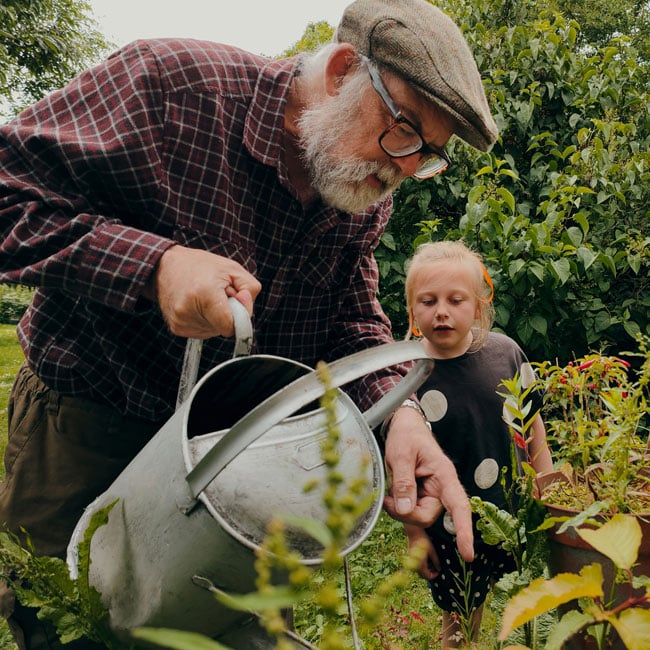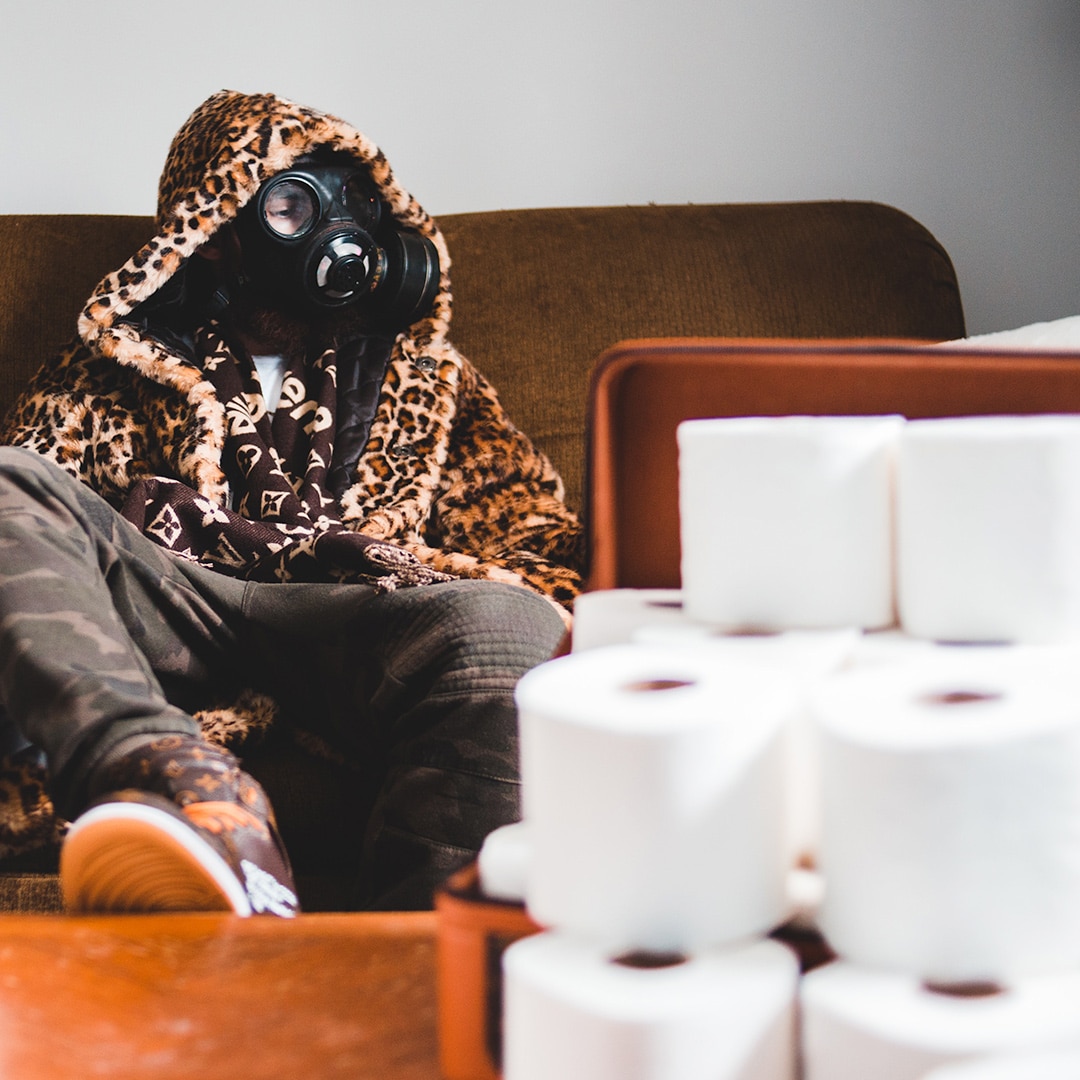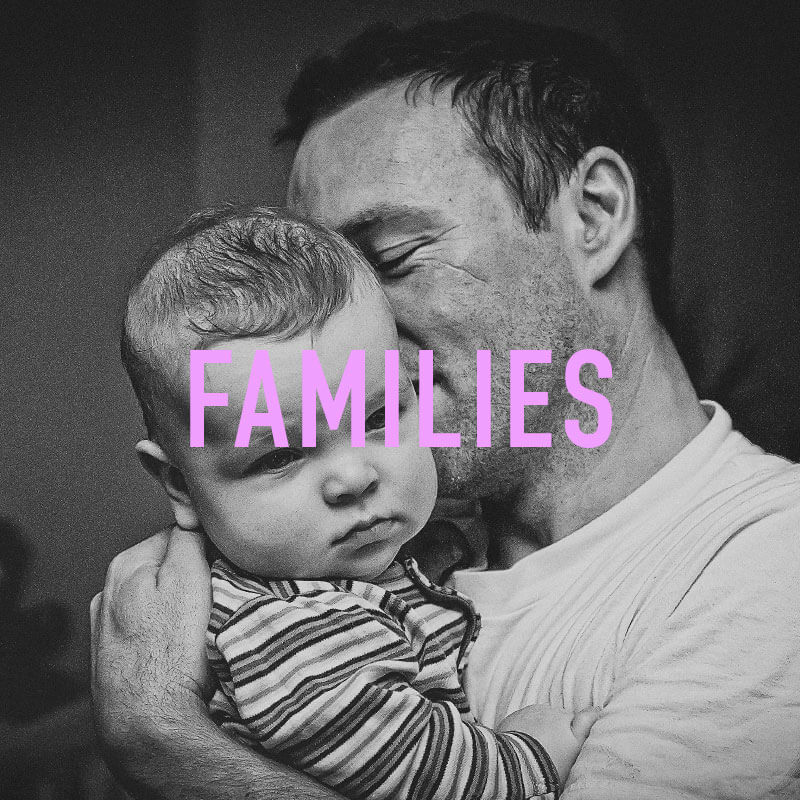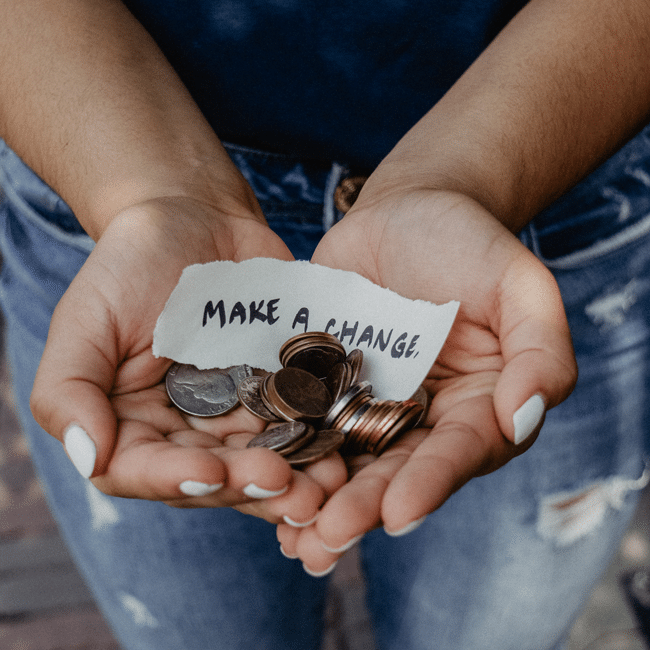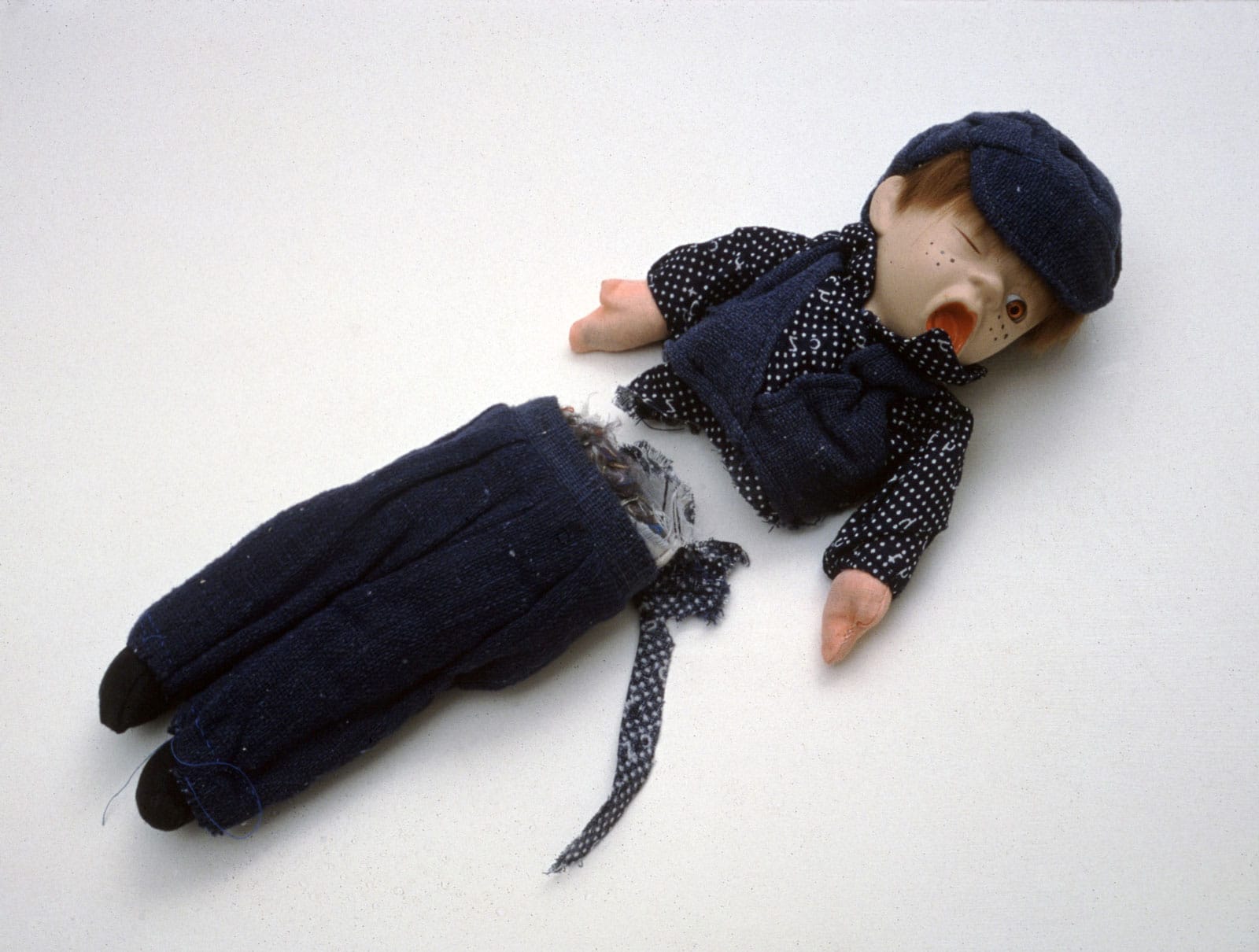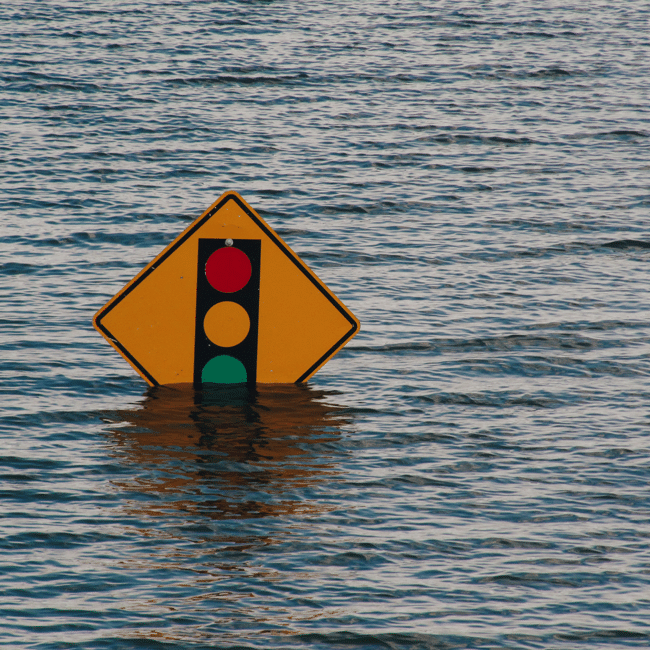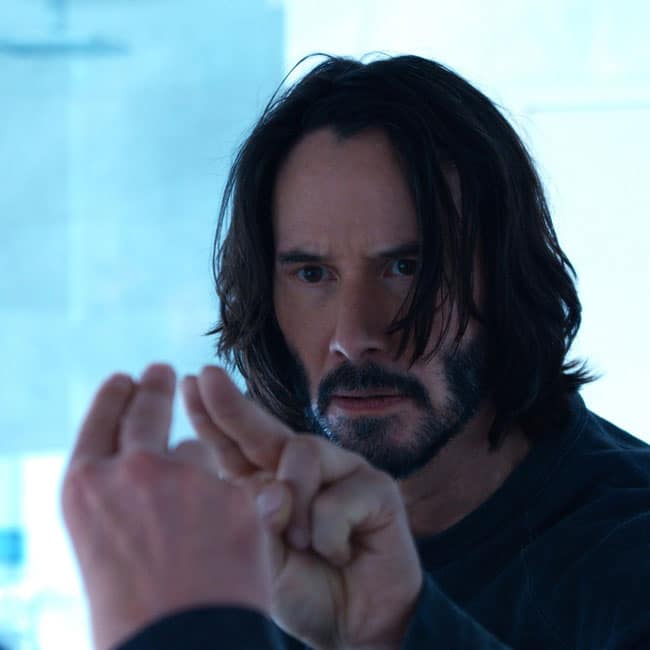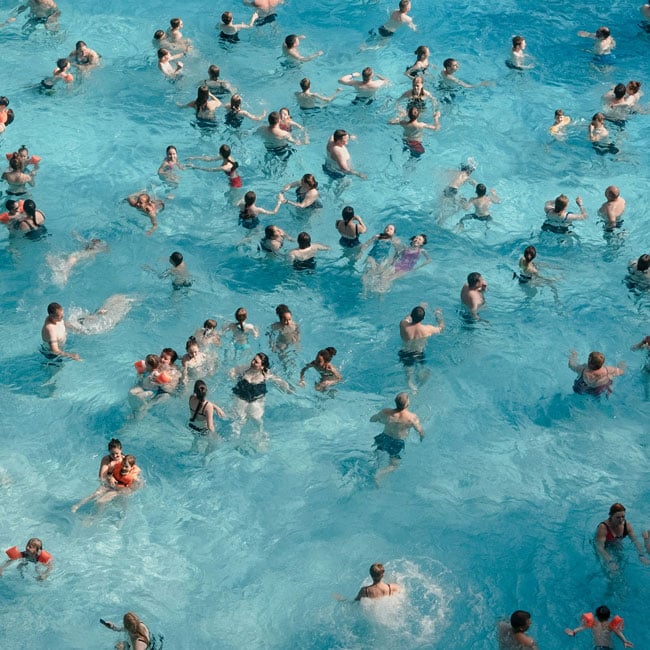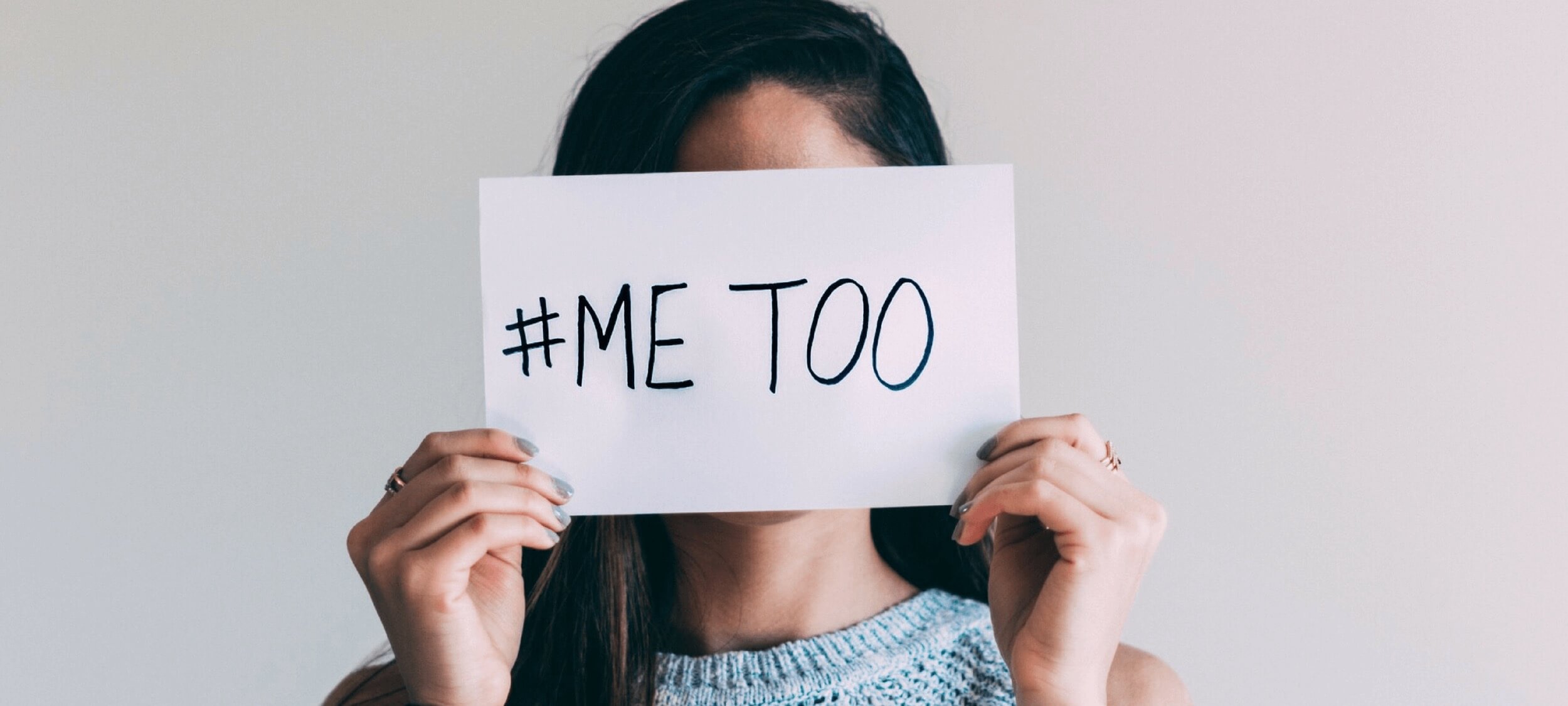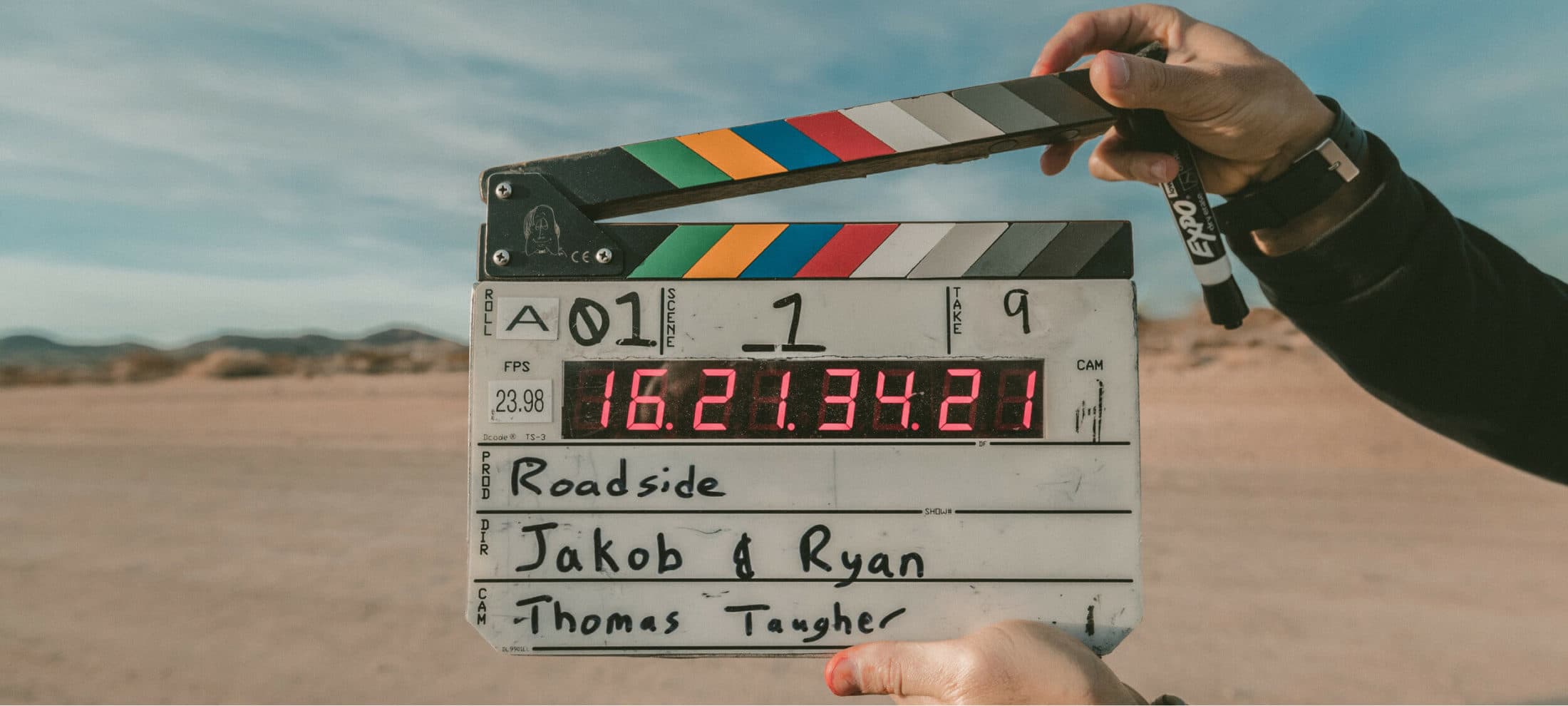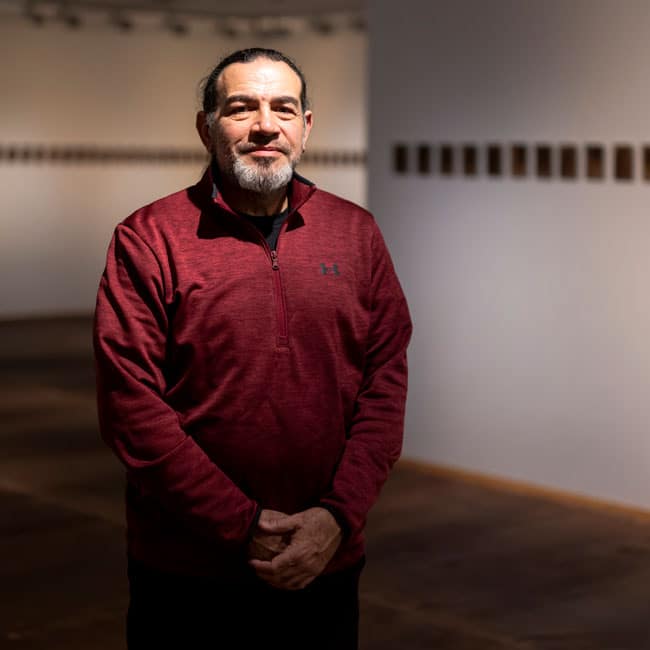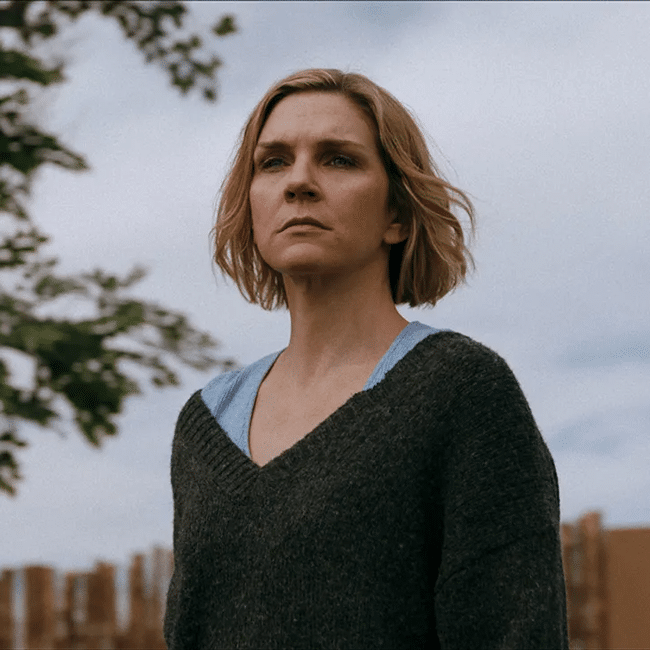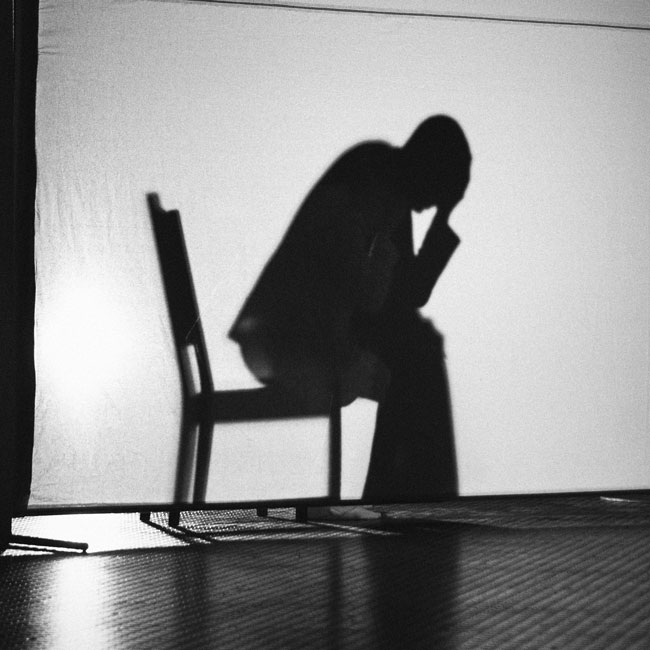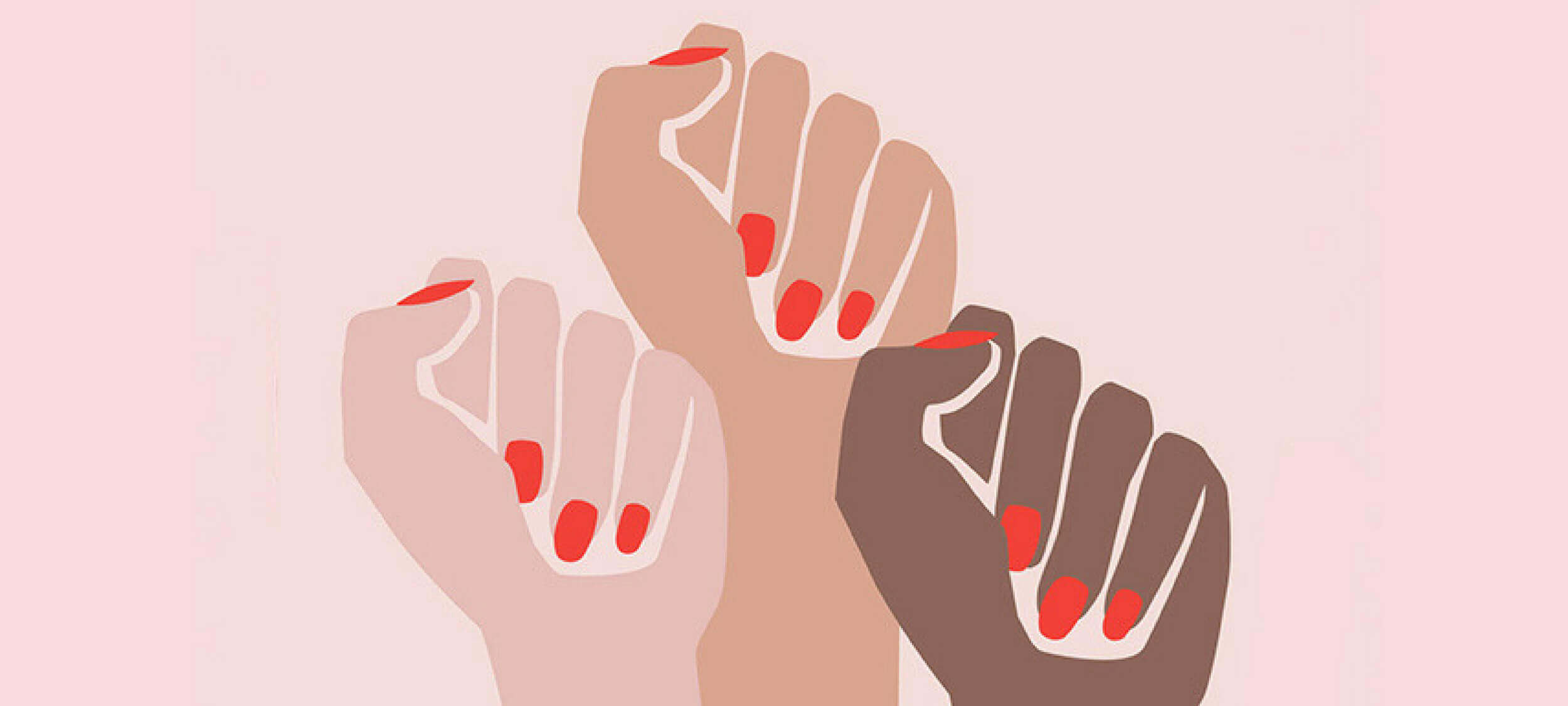Do we exaggerate the difference age makes?
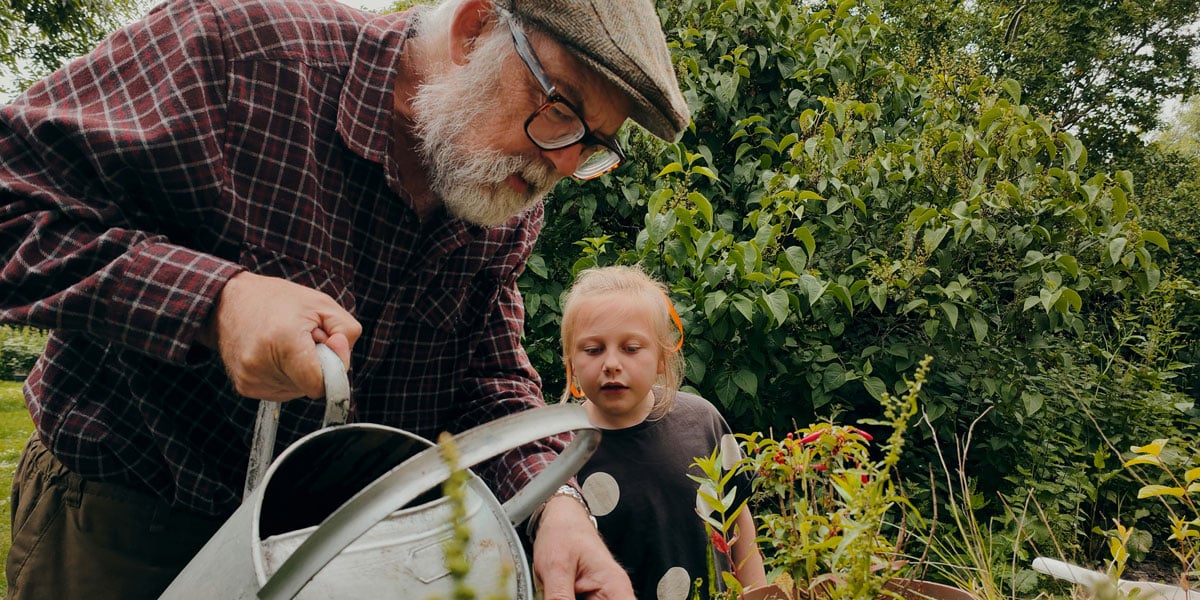
Do we exaggerate the difference age makes?
Opinion + AnalysisSociety + CultureRelationships
BY Emma Wilkins 19 MAY 2025
A few weekends ago, I made a parenting mistake. I didn’t realise in the moment. The penny didn’t drop, until a good friend made a comment afterwards.
My family was hosting a brunch with several other families. After a few hours in the noisy, sticky, fray, one of our kids asked to retreat. Sensing my hesitation, he pointed out that none of the other guests were of his age.
Partly in acknowledgement, and partly because the retreat he had in mind involved attacking the thistles taking over our front lawn, I let him slip away.
Shortly afterwards, sitting with a group of parents, watching syrup-crazed children run riot out the back, I explained his absence. One parent stopped me at the words “no one my age”. He was wondering, aloud, why age was relevant – let alone a reason to retreat.
The friend who stopped me was one who’d moved to Australia as an adult. He saw the culture he was living in, and the one he’d left, with the benefit of fresh, discerning eyes. Before he finished making it, I saw his point.
Why not expect our kids to socialise with others, regardless of age? Why not encourage them to enjoy the company of those younger than them, and the company of those older than them?
The friend in question told us he’d noticed this propensity to segregate by age before, and resolved not to succumb. He said he makes a point of crossing age divides, of greeting and conversing without discriminating, at social gatherings. Children, in particular, often seem puzzled by his attention. Sometimes they don’t return a greeting, or answer a question, they just stare. The stare might be translated to mean, “Why is this old dude talking to me?” or, “Why would I talk to this old dude?”. Sometimes they mutter something before running off, sometimes they just run off.
As the friend spoke, I recalled a social event where the child who’d just retreated had ended up deep in conversation with a grandparent he’d never met. I wished this image had come to mind earlier, prompted by the words “no one my age”. I knew both he and that grandparent had enjoyed their conversation, maybe as much as the cake, maybe more. It was proof age needn’t be a barrier.
Age needn’t be a barrier, but my friend’s description of children giving him quizzical looks when he acknowledges them suggests us adults are making it one. It suggests so few adults – not counting relatives – take the time to talk to them, that when one does it’s an anomaly.
I consider how much attention I pay to children who aren’t my own at social gatherings.
Sometimes, my attention is on fellow grown-ups and I don’t think to make an effort. At other times, I think to – then I overthink. I see a child and a compliment comes to mind but it’s based on their appearance, or a stereotype, so I censor myself. Or a question comes to mind, but the child in question is a teen and I imagine it will either induce a deep inward groan – “Not another adult asking what I’ll do post-school, how should I know?” – or defensiveness, or self-consciousness, or insecurity…
What lame excuses! If I want my kids to enjoy and initiate interactions and relationships with people of all ages, to throw age-related bias out the window, I should too – even if it requires a little bit of extra effort, creativity, or risk. Who cares if I induce an eye-roll or a groan? What matters is that I don’t just take a genuine interest, and show genuine interest, in adult’s lives, but in the lives of children, too.
I’m sure political philosopher David Runciman also attracts plenty of eye-rolls, as he did at last year’s Festival of Dangerous Ideas, when arguing that children as young as six should be allowed to vote. After acknowledging that many people find the idea laughable, he turns the question around. “Why shouldn’t they vote?” he asks. “They’re people; they’re citizens; they have interests; they have preferences; there are things that they care about.” Children might make irrational, ill-informed decisions, they might follow their tribe unthinkingly, they might dismiss facts that challenge pre-existing beliefs, but, he points out, adults might too.
“You can’t generalise about children any more than you can generalise about adults,” Runciman says, noting that being well-informed isn’t a prerequisite for voting. Being capable is, and six-year-olds, he argues, are.
Runciman speaks from experience – he once spent a term in an English primary school talking to kids as young as six about politics. Treating them “like they were full citizens”, he arranged for them to participate in the kind of focus groups political parties run for adults. The professional facilitator who ran them said one was among the most inspiring focus group sessions she’d ever been part of.
I’m not convinced children as young as six should be allowed to vote; I am convinced that when we assume we can’t learn from, or socialise with, or befriend them – when we widen the generational divide instead of closing it – we do ourselves and our society a disservice.
I was grateful, and I’m grateful still, that the friend who drew my attention to my parenting mistake didn’t let concern about how it might come across stop him from speaking his mind. Frank honesty is a quality some associate with children. Either way, it’s one that I admire.
I admired his persistence too – despite all those puzzled looks from kids, he’s persevered.
That persistence has paid off. It’s taken months, it’s taken years, but now some children run to him, or look for him at social gatherings. Now some consider him a friend.
For more, tune into David Runciman’s FODI talk, Votes for 6 year olds:

BY Emma Wilkins
Emma Wilkins is a journalist and freelance writer with a particular interest in exploring meaning and value through the lenses of literature and life. You can find her at: https://emmahwilkins.com/
Ethics in your inbox.
Get the latest inspiration, intelligence, events & more.
By signing up you agree to our privacy policy
You might be interested in…
Opinion + Analysis
Business + Leadership, Relationships
Beyond the headlines of the Westpac breaches
Opinion + Analysis
Health + Wellbeing, Relationships, Science + Technology
Philosophically thinking through COVID-19
Opinion + Analysis
Politics + Human Rights, Relationships
Who’s your daddy?
Opinion + Analysis
Relationships
Will I, won’t I? How to sort out a large inheritance
How to tackle the ethical crisis in the arts

How to tackle the ethical crisis in the arts
Opinion + AnalysisSociety + CultureBusiness + Leadership
BY Tim Dean 19 MAY 2025
Arts organisations need to strengthen their ethical decision making and communication if they’re to avoid getting caught in controversy.
Which value should arts organisations prioritise? Artistic expression? Or the creation of safe and inclusive spaces, free from divisive issues and the possibility of offence? They often have to choose one because it’s impossible to prioritise both.
Yet, rightly or wrongly, arts organisations are facing demands that they promote both values, with some voices calling for them to prioritise safety at the expense of expression. The sheer impossibility of attempting to satisfy both values – or at least not failing in one of them and triggering a costly backlash – must be keeping the leaders of arts organisations across the country up at night.
There has always been an inherent tension between the values of artistic expression and safety (broadly defined), so there will inevitably be situations where maximising one will compromise the other. Push expression to the extreme and art can be dehumanising or promote hatred. Push safety to the fore and art would lose its power to challenge dominant narratives. This is why the arts have always had to balance the two, often leaning in favour of artistic expression, but with red lines that make things like bigotry or hate speech off-limits.
The challenge today is that we live in an increasingly fractious, polarised and volatile environment, where issues such as the conflict in Gaza are dividing communities and eroding trust and good faith. Where, in times past, onlookers might have treated an ambiguous artwork with charity, now they see endorsement of terror. Where an artist might once have been forgiven for making an off-hand remark in support of a humanitarian cause they believe in, they are now interpreted as promoting hate. This milieu has contributed to many voices – often powerful voices – calling to lower the bar for what is considered “unsafe” and, as a result, seeking to overly constrain expression.
How are arts organisations to continue to fulfil their mandate in such an environment? Given that the issues facing them are fundamentally ethical in nature, the answer comes in strengthening their ethical foundations. One way of doing that is formally adopting a clearly articulated set of values (what they think is good) and principles (the rules they adhere to) that become the sole standard for judgement when individuals make decisions on behalf of their organisation.
Couple that with robust processes for engaging in ethical decision making, and the organisation benefits from making better decisions – and avoiding hasty ones driven by panic or expedience – and is also better able to justify those decisions in the public sphere. There might still be some who criticise the decision, but even a cynic will be forced to acknowledge the consistency and integrity of the organisation.
Of course, arts organisations are not monolithic entities. Leaders and staff will inevitably vary in what they personally think is good and bad or right and wrong. And while individuals have a clear right to decide whether or not they will work with or support a particular organisation, no person can impose their own personal values and principles on those they work with. So, organisations need to have internal processes that allow this diversity to be acknowledged, while arriving at a single set of values and principles that can guide the organisation’s decisions.
And they need to do this without allowing “shadow values and principles” to subvert them. Many organisations have a lovely list of words pinned to the wall or splashed across the ‘About’ page on their website. But their internal culture promotes a different set of values by rewarding or punishing certain behaviours. As a result, it’s possible for an organisation to say it prioritises artistic expression but its actions show it values the patronage of wealthy supporters more, and it’s willing to compromise the former to satisfy the latter.
A truly ethical organisation will be self-aware enough to recognise shadow values and principles when they emerge, and a truly enlightened leadership will be able to redirect the culture towards promoting their stated values and principles.
All of this requires work. But it can be done. I have seen it first hand. I’ve worked with multiple arts organisations to help them better understand the values and principles that they wish to promote, and workshopped a range of scenarios to put its decision making processes to the test.
What would they do if an artist they’ve programmed posts something inflammatory on social media a week before they’re scheduled to perform? What if it was a controversial work from a decade ago? What are the red lines in terms of expression and what are they willing to defend? What would they do if a high-profile donor threatens to pull funding if they don’t deplatform an artist they object to? How should they treat an artist who uses the platform they’ve been given by the organisation to make a political comment unrelated to their work?
The organisations I’ve worked with have answers to these questions. The answers might not satisfy everyone, and they might involve compromises, but they are consistent with the values and principles that drive the organisation.
There may be no single correct answer to many of the ethical challenges that arts organisations face, but there are better and worse answers. Having a robust ethical framework and decision making processes won’t make arts organisations immune to controversy, but it will help them avoid much of it, and enable them to respond with integrity to whatever comes their way.
If you’re an individual or an organisation facing a difficult workplace decision, The Ethics Centre offers a range of free resources to support this process. We also offer bespoke workshops, consulting and leadership training for organisations of all sizes. Contact consulting@ethics.org.au to find out more.

BY Tim Dean
Dr Tim Dean is a public philosopher, speaker and writer. He is Philosopher in Residence and Manos Chair in Ethics at The Ethics Centre.
Ethics in your inbox.
Get the latest inspiration, intelligence, events & more.
By signing up you agree to our privacy policy
You might be interested in…
Opinion + Analysis
Relationships, Science + Technology, Society + Culture
5 things we learnt from The Festival of Dangerous Ideas 2022
Opinion + Analysis
Business + Leadership
Why Australian billionaires must think “less about the size of their yard” and more about philanthropy
Big thinker
Politics + Human Rights, Society + Culture
Big Thinker: Slavoj Žižek
Opinion + Analysis
Society + Culture
Strange bodies and the other: The horror of difference
We need to step out of the shadows in order to navigate a complex world

We need to step out of the shadows in order to navigate a complex world
Opinion + AnalysisSociety + Culture
BY Simon Longstaff 14 MAY 2025
One of the most potent allegories ever to be developed by a philosopher is Plato’s allegory of ‘the cave’.
The story centres around a community of people who are bound, from head to toe, while facing a wall. For the entirety of their lives, nothing is to be seen other than two-dimensional shadows cast by whatever passes between their backs and the source of illumination (the sun or a raging fire). Knowing of no other way to see the world, the chained viewers believe that all of reality is represented by the shadows they perceive. Worse still, they have no concept of ‘shadows’ that might shake their conviction that what they see is ‘real’.
Then, one fateful day, a single individual manages to break their bonds. Free to roam, they encounter a three-dimensional world of colour. Then – only then – do they realise that their life has been defined by error; that the shadows that they once took to represent the whole of reality are nothing more than a simplistic rendering of something far more complex, compelling and beautiful. Inspired by this new understanding, the person returns to liberate others. At first, they are mocked, labelled a lunatic and accused of heresy. Eventually, enough people are freed from their shackles and learn to see.
I used to think it was obvious that everyone would jump at the opportunity to be liberated from ignorance. Most of my working life has been animated by Socrates’ great maxim that, “the unexamined life is not worth living”. After all, is it not the capacity to acknowledge – but also to transcend – our instincts and desires, that makes us human? Is it not obvious that a refusal to examine our lives and to make conscious choices, is actually a refusal to embrace the fullness of our humanity? And is it not the task of philosophy – especially ethics – to equip us so that we might better manage complexity once the chains of unthinking custom and practice are loosened?
As it happens, the ‘shadows’ are far more attractive than I had supposed. In a world of increasing complexity, I have been surprised to see an increasing number of people yearning for their chains in the hope that they might recover the simpler two-dimensional world that they have left behind. I see this in an urge to force what is inherently complex into a deceptively simple form. This is an escape back into a world of shadows – an easier path than that of learning how better to deal with complex reality.
The truth is that most of the important things in life are complex. The ‘messiness’ of the human condition comes from the fact that we have the capacity to make conscious (and conscientious) choices in circumstances of radical uncertainty.
Too often, the choice is not between ‘good’ and ‘bad’ or ‘right’ and ‘wrong’. Values and principles of equal weight can pull us in opposite directions. It is easy to become ‘stuck’, or to face the prospect that the ‘least bad’ alternative is your only viable choice.
Ethics can help us address this messy reality. Not the impossible, flawed ideal of ‘ethical perfection’ – but rather being equipped to live in the uncomfortable light of reality … in all its complexity. We need people to become ‘champions for the common good’. For without dedicated care and attention, our ethical foundations begin to erode.
Ours is a complex world. But when we embrace the ethical dimension of our lives; when we step into the light, nothing can overwhelm and everything becomes possible.
With your support, The Ethics Centre can continue to be the leading, independent advocate for bringing ethics to the centre of everyday life in Australia. Click here to make a tax deductible donation today.

BY Simon Longstaff
Simon Longstaff began his working life on Groote Eylandt in the Northern Territory of Australia. He is proud of his kinship ties to the Anindilyakwa people. After a period studying law in Sydney and teaching in Tasmania, he pursued postgraduate studies as a Member of Magdalene College, Cambridge. In 1991, Simon commenced his work as the first Executive Director of The Ethics Centre. In 2013, he was made an officer of the Order of Australia (AO) for “distinguished service to the community through the promotion of ethical standards in governance and business, to improving corporate responsibility, and to philosophy.” Simon is an Adjunct Professor of the Australian Graduate School of Management at UNSW, a Fellow of CPA Australia, the Royal Society of NSW and the Australian Risk Policy Institute.
Ethics in your inbox.
Get the latest inspiration, intelligence, events & more.
By signing up you agree to our privacy policy
You might be interested in…
Big thinker
Society + Culture
Big Thinker: Epicurus
Opinion + Analysis
Society + Culture
Critical thinking in the digital age
Opinion + Analysis
Relationships, Society + Culture
Violence and technology: a shared fate
Opinion + Analysis
Society + Culture
Feeling our way through tragedy
Ethics Explainer: Moral Courage

Ethics Explainer: Moral Courage
ExplainerSociety + CulturePolitics + Human Rights
BY The Ethics Centre 29 APR 2025
Martin Luther King Jr, Rosa Parks, Frederick Douglass, Susan B. Anthony, Greta Thunberg, Vincent Lingiari, Malala Yousafzai.
For most, these names, and many more, evoke a sense of inspiration. They represent decades and centuries of steadfast moral conviction in the face of overwhelming national and global pressure.
Rosa Parks, risking the limited freedom she was afforded in 1955 America, refused to acquiesce to the transit segregation of the time and sparked an unprecedented boycott led by Martin Luther King Jr.
Frederick Douglass, risking his uncommon position of freedom and power as a Black man in pre-civil rights America, used his standing and skills to advocate for women’s suffrage.
There have always been people who have acted for what they think is right regardless of the risk to themselves.
This is moral courage. The ability to stand by our values and principles, even when it’s uncomfortable or risky.
Examples of this often seem to come in the form of very public declarations of moral conviction, potentially convincing us that this is the sort of platform we need to be truly morally courageous.
But we would be mistaken.
Speaking up doesn’t always mean speaking out
Having the courage to stand by our moral convictions does sometimes mean speaking out in public ways like protesting the government, but for most people, opportunities to speak up manifest in much smaller and more common ways almost every day.
This could look like speaking up for someone in front of your boss, questioning a bully at school, challenging a teacher you think has been unfair, preventing someone on the street from being harassed or even asking someone to pick up their litter.
In each case, an everyday occurrence forces us to confront discomfort, and potentially danger or loss, to live out our values and ideals. Do we have the courage to choose loyalty over comfort? Honesty over security? Justice over personal gain?
The truth is that sometimes we don’t.
Sometimes we fail to take responsibility for our own inaction. Nothing shows this better than the bystander effect: functionally the direct opposite to moral courage, the bystander effect is a social phenomenon where individuals in group or public settings fail to act because of the presence of others. Being surrounded by people causes many of us to offload responsibility to those around us, thinking: “Someone else will handle it.”
This is where another kind of moral courage comes into play: the ability to reflect on ourselves. While it’s important to learn how and when to speak up, some internal work is often needed to get there.
Self-reflection is often underestimated. But it’s one of the hardest aspects of moral courage: the willingness to confront and interrogate our own thoughts, habits, and actions.
If someone says something that makes you uncomfortable, the first step of moral courage is acknowledging your discomfort. All too often, discomfort causes us to disengage, even when no one else is around to pass responsibility onto. Rather than reckon with a situation or person who is challenging our values or principles, we curl up into our shells and hope the moment passes.
This is because moral courage can be – it takes time and practice to build the habits and confidence to tolerate uncomfortable situations. And it takes even more time and practice to prioritise what we think is right with friends, family and colleagues instead of avoiding confrontation in relationships that are already often complicated.
It can get even more complicated once we consider all of our options because sometimes the right ways to act aren’t obvious. Sometimes, the morally courageous thing to do is actually to be silent, or to walk away, or to wait for a better opportunity to address the issue. These options can feel, in the moment, akin to giving up or letting someone else ‘win’ the interaction. But that is the true test of moral courage – being able to see the moral end goal and push through discomfort or challenge to get there.
The courage to be wrong
The flipside to self-reflection is the ability to recognise, acknowledge and reflect with grace when someone speaks up against us.
It’s hard to be told that we’re wrong. It’s even harder to avoid immediately placing walls in our own defence. Overcoming that is the stuff of moral courage too – not just being able to confront others, but being able to confront ourselves, to question our understanding of something, our actions or our beliefs when we are challenged by others.
Whether these changes are worldview-altering, or simply a swapping of word choice to reflect your respect for others, the important thing is that we learn to sit with discomfort and listen. Listen to criticism but also listen to our own thoughts and figure out why our defences are up.
Because in the end, moral courage isn’t just about bold public stands. It’s about showing up—in big moments and more mundane ones—for what’s right. And that begins with the courage to face ourselves.

Ethics in your inbox.
Get the latest inspiration, intelligence, events & more.
By signing up you agree to our privacy policy
You might be interested in…
Explainer, READ
Society + Culture
Ethics Explainer: Cancel Culture
Opinion + Analysis
Business + Leadership, Society + Culture
Banking royal commission: The world of loopholes has ended
Opinion + Analysis
Business + Leadership, Society + Culture
The Ethics Centre: A look back on the highlights of 2018
Opinion + Analysis
Climate + Environment, Politics + Human Rights
Who is to blame? Moral responsibility and the case for reparations
BY The Ethics Centre
The Ethics Centre is a not-for-profit organisation developing innovative programs, services and experiences, designed to bring ethics to the centre of professional and personal life.
What does Adolescence tell us about identity?
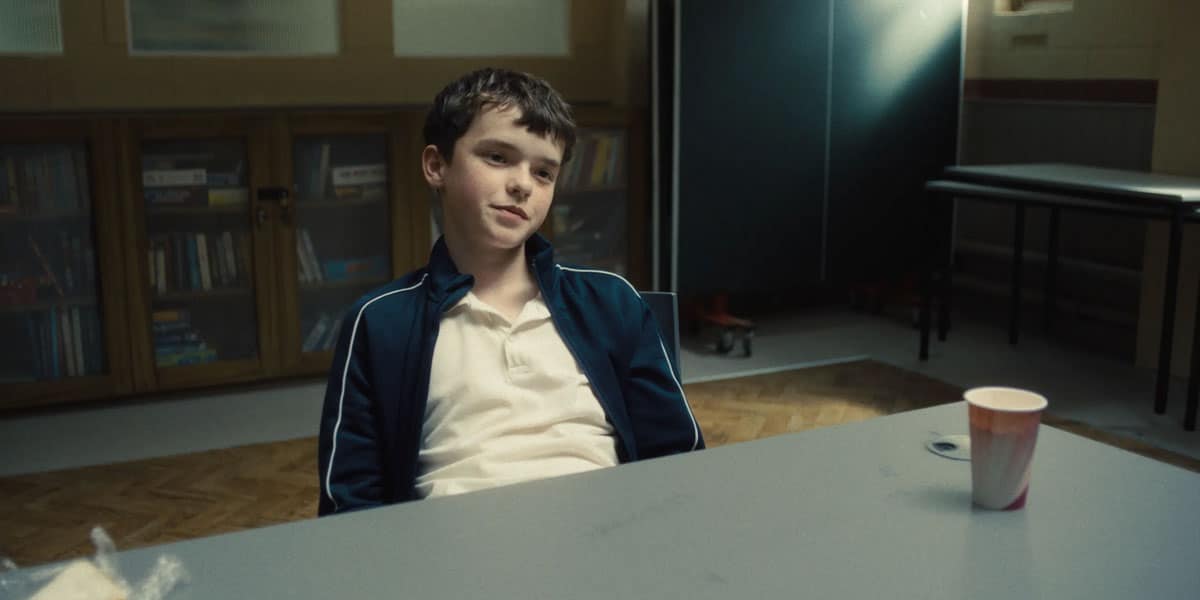
What does Adolescence tell us about identity?
Opinion + AnalysisSociety + Culture
BY Joseph Earp 27 MAR 2025
Adolescence, the exemplary new Netflix series that has become immediate water cooler conversation fodder, is built around a filmmaking decision that might have, in lesser hands, felt like a gimmick. Each of the four episodes of the show are filmed in one continuous, unbroken take.
Here, the decision is not just an inspiring feat of filmmaking verve. It also has a thematic point. Adolescence concerns the murder of a female high school student – the accused is 13-year-old Jamie Miller (Owen Cooper). The show carefully explores the fallout of that violent crime, in particular, what it churns up in the heart of Jamie’s father, Eddie (Stephen Graham, also the show’s co-creator).
The themes of Adolescence are laid out early, and clearly: misogyny; the anger in the heart of teenage boys; and, in particular, the forces that influence adolescents. These themes coalesce in one of the major questions of the show: who shapes the identity of young people, and, pressingly, young men? Is it their parents? The world around them? Or, most worryingly of all, the bad ethical actors who have made their careers through stoking the fires of hatred?
That unblinking, never-cutting camera allows us to explore this question with striking clarity. The camera never looks away. So painfully and shockingly, neither can we.
Who makes our children?
Unlike many other works of art based around crime and murder, Adolescence is not, particularly, a whodunit. It is more like a whydunit. We do have questions early on as to whether Jamie actually committed the crime of which he has been accused, but this is not the focus of the show. Instead, the mystery is a broader, harder, more probing one: why do young men commit acts of violence against women? More specifically, who formed Jamie’s ethical identity?
Eddie, Jamie’s father, seems to worry that it might be him. He spends the show wracked by guilt, confronted with the knowledge of his son’s suspected crime, and terrified that he did not do enough to stop him from walking down a very dark path. But is he solely to blame? The beauty of Adolescence is that it instead leaves those “responsible” for the dark parts of Jamie’s personality nebulous.
In his groundbreaking work, Sources of the Self, philosopher Charles Taylor provides an answer – albeit a worrying one. He argues that identity is formed by a collective. In his view, human beings are defined and constructed through their relationship with others – we become who we are, by virtue of who we interact with. On this view, parents are of course responsible for the shaping of their children’s ethical makeup – but they’re not solely responsible.
And they’re particularly not responsible when adolescence hits. Every parent to teenagers knows that rebellion against the older guard is inevitable – and parents are often the last people that children will confer with. That, according to Taylor, leaves children susceptible to other formative ethical forces – and in the case of Jamie, those are the bad misogynist actors that he is surrounded by, from his schoolmates, to the ever-pressing threat of online radicalisation.
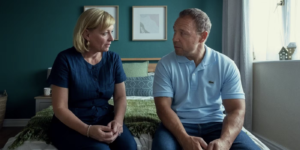
The spectre of the other
Taylor’s view is particularly troubling when combined with the writings of another philosopher, Giorgio Agamben. In his major work, Homo Sacer: Sovereign Power and Bare Life, Agamben argues that ethical identities are especially formed by the rules of inclusion and exclusion. People become who they are by deciding who they are not, forming an in and an out-group that gives them a sense of security in their own personhood.
In Adolescence, it’s exactly that exclusionary nature that seems to lead Jamie down his dark path. His world, like the world of far too many teenage boys, is defined by strict and dangerous binaries: boys versus girls, winners versus losers. His worldview, when we get to hear it, seems defined by hatred for what is different, and a desperate clinging to that, which he sees as the same as himself. When such strict battle lines are drawn, violence is a natural endpoint.
What then do we do to attempt to get our teenage boys back on the right path? Away from violence, hatred, and exclusion? Adolescence, bravely, doesn’t offer a solution. In fact, that’s exactly what Taylor and Agamben show us – that one simple, pat, generic solution doesn’t have the power to change anything.
After all, if we take the work of those philosophers to be true, then we see the entire social environment as constitutive of identity. That means parents. It means friends. It means the entertainment young men consume. It means what they hear in the playground.
Our gaze must significantly broaden – and we must not consider the likes of Jamie to be an outlier. Instead, we must see him as a product of an entire social system.
When, in the final episode of Adolescence, Eddie asks his wife, “shouldn’t we have done better?”, the initial impulse is to assume he means the two of them. The better read is that he means all of us.

BY Joseph Earp
Joseph Earp is a poet, journalist and philosophy student. He is currently undertaking his PhD at the University of Sydney, studying the work of David Hume.
Ethics in your inbox.
Get the latest inspiration, intelligence, events & more.
By signing up you agree to our privacy policy
You might be interested in…
Opinion + Analysis
Health + Wellbeing, Society + Culture
Does your body tell the truth? Apple Cider Vinegar and the warning cry of wellness
Opinion + Analysis
Relationships, Society + Culture
Greer has the right to speak, but she also has something worth listening to
Opinion + Analysis
Society + Culture
What are we afraid of? Horror movies and our collective fears
Opinion + Analysis
Relationships, Society + Culture
Nothing But A Brain: The Philosophy Of The Matrix: Resurrections
Thought experiment: The original position
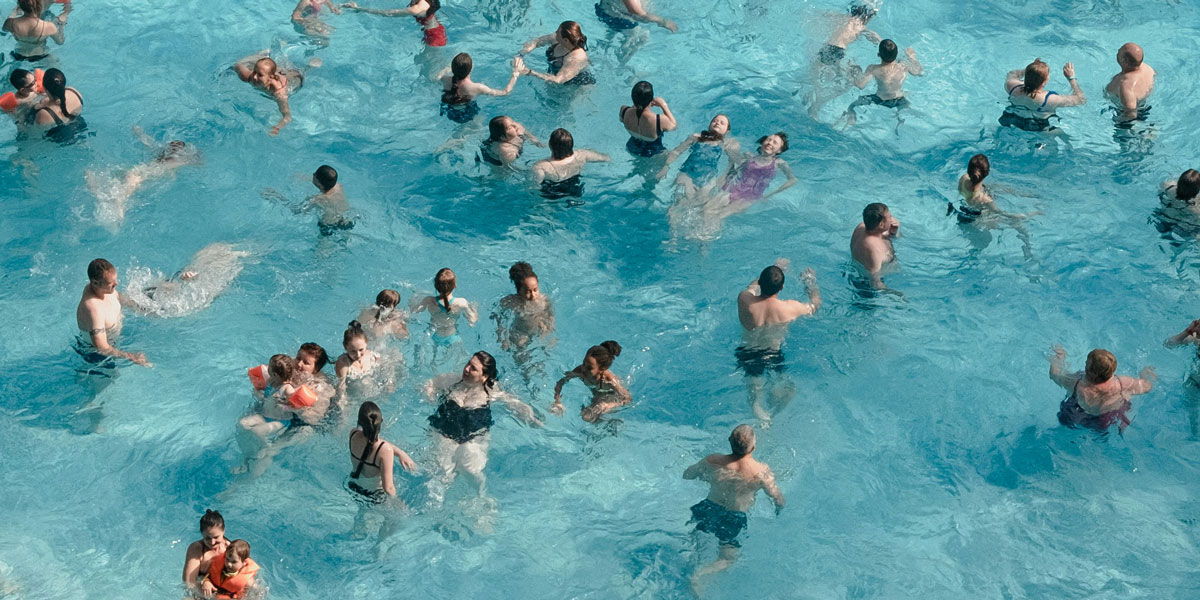
Thought experiment: The original position
ExplainerSociety + CulturePolitics + Human Rights
BY The Ethics Centre 20 MAR 2025
If you were tasked with remaking society from scratch, how would you decide on the rules that should govern it?
This is the starting point of an influential thought experiment posed by the American 20th century political philosopher, John Rawls, that was intended to help us think about what a just society would look like.
Imagine you are at the very first gathering of people looking to create a society together. Rawls called this hypothetical gathering the “original position”. However, you also sit behind what Rawls called a “veil of ignorance”, so you have no idea who you will be in your society. This means you don’t know whether you will be rich, poor, male, female, able, disabled, religious, atheist, or even what your own idea of a good life looks like.
Rawls argued that these people in the original position, sitting behind a veil of ignorance, would be able to come up with a fair set of rules to run society because they would be truly impartial. And even though it’s impossible for anyone to actually “forget” who they are, the thought experiment has proven to be a highly influential tool for thinking about what a truly fair society might entail.
Social contract
Rawls’ thought experiment harkens back to a long philosophical tradition of thinking about how society – and the rules that govern it – emerged, and how they might be ethically justified. Centuries ago, thinkers like Thomas Hobbes, Jean-Jacques Rousseau and John Lock speculated that in the deep past, there were no societies as we understand them today. Instead, people lived in an anarchic “state of nature,” where each individual was governed only by their self-interest.
However, as people came together to cooperate for mutual benefit, they also got into destructive conflicts as their interests inevitably clashed. Hobbes painted a bleak picture of the state of nature as a “war of all against all” that persisted until people agreed to enter into a kind of “social contract,” where each person gives up some of their freedoms – such as the freedom to harm others – as long as everyone else in the contract does the same.
Hobbes argued that this would involve everyone outsourcing the rules of society to a monarch with absolute power – an idea that many more modern thinkers found to be unacceptably authoritarian. Locke, on the other hand, saw the social contract as a way to decide if a government had legitimacy. He argued that a government only has legitimacy if the people it governs could hypothetically come together to agree on how it’s run. This helped establish the basis of modern liberal democracy.
Rawls wanted to take the idea of a social contract further. He asked what kinds of rules people might come up with if they sat down in the original position with their peers and decided on them together.
Two principles
Rawls argued that two principles would emerge from the original position. The first principle is that each person in the society would have an equal right to the most expansive system of basic freedoms that are compatible with similar freedoms for everyone else. He believed these included things like political freedom, freedom of speech and assembly, freedom of thought, the right to own property and freedom from arbitrary arrest.
The second principle, which he called the “difference principle”, referred to how power and wealth should be distributed in the society. He argued that everyone should have equal opportunity to hold positions of authority and power, and that wealth should be distributed in a way that benefits the least advantaged members of society.
This means there can be inequality, and some people can be vastly more wealthy than others, but only if that inequality benefits those with the least wealth and power. So a world where everyone has $100 is not as just as a world where some people have $10,000, but the poorest have at least $101.
Since Rawls published his idea of the original position in A Theory of Justice in 1972, it has sparked tremendous discussion and debate among philosophers and political theorists, and helped inform how we think about liberal society. To this day, Rawls’ idea of the original position is a useful tool to think about what kinds of rules ought to govern society.

Ethics in your inbox.
Get the latest inspiration, intelligence, events & more.
By signing up you agree to our privacy policy
You might be interested in…
Opinion + Analysis
Politics + Human Rights, Relationships
The Dark Side of Honour
Opinion + Analysis
Politics + Human Rights, Relationships
Calling out for justice
Opinion + Analysis
Society + Culture
10 films to make you highbrow this summer
Opinion + Analysis
Society + Culture, Politics + Human Rights
Who gets heard? Media literacy and the politics of platforming
BY The Ethics Centre
The Ethics Centre is a not-for-profit organisation developing innovative programs, services and experiences, designed to bring ethics to the centre of professional and personal life.
Ask an ethicist: Am I falling behind in life “milestones”?
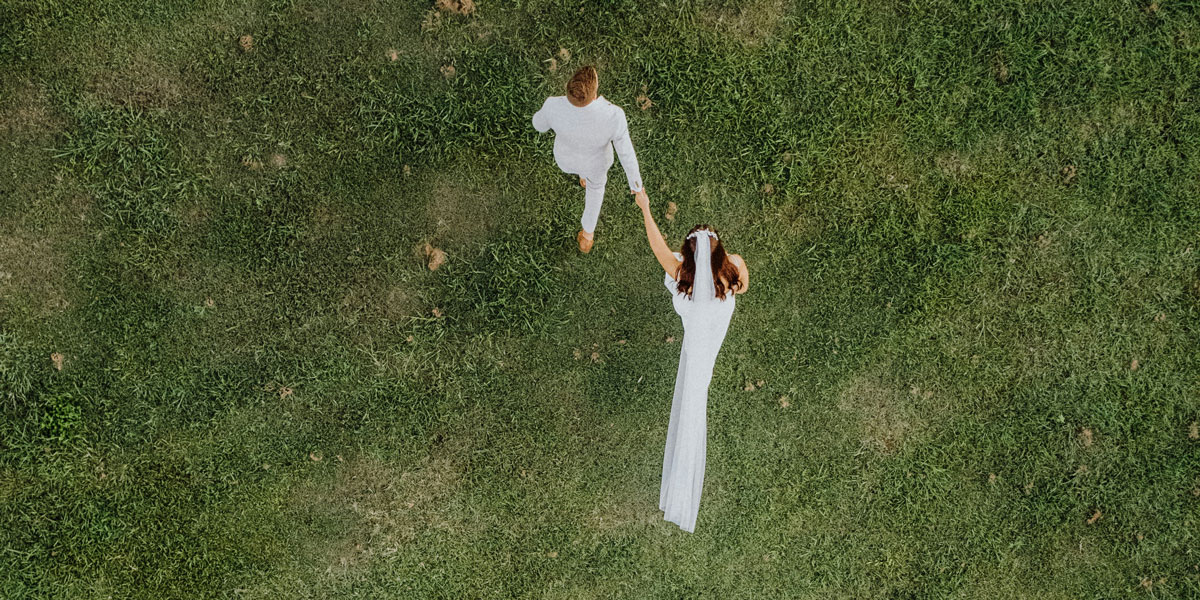
Ask an ethicist: Am I falling behind in life “milestones”?
Opinion + AnalysisSociety + Culture
BY Cris Parker 11 MAR 2025
Over the past couple of years I’ve noticed all my friends are either getting married, buying houses or starting families. I haven’t achieved any of these major life “milestones” yet and am worried I won’t any time soon. Should I be concerned I’m not keeping up?
Big life milestones – getting married, having kids, or buying houses are often seen as markers for success and there is no right way to go about them, if at all. It is a deeply personal choice influenced by individual values and principles, goals, and the society we live in.
In Western societies, there is often an unspoken expectation that by your mid-30s, you should have ticked off a checklist: education, marriage, kids, and a mortgage. But where do these expectations come from? And do they really reflect what we want for ourselves?
It’s easy to feel like you are falling behind when everyone around you seems to be hitting milestones at a kicking pace. Social media does not help – our feeds are filled with engagement announcements, baby photos, and housewarming parties, making it seem like these achievements are happening all the time. These “deadlines” are often arbitrary, and the pressure to achieve them can often come from unidentifiable places.
Beyond social media, family, culture, and tradition also play a significant role in shaping our expectations. Parents and grandparents often see marriage, kids, and home ownership as the natural and successful progression into adulthood. Friends, too, may unintentionally add pressure by assuming you’ll follow the same path they did – moving to the suburbs, starting a family, or planning a big wedding. These pressures can subtly reinforce the idea that there is a “right” path to follow.
Traditions can be comforting, offering a sense of structure and belonging. But they can also feel restrictive if they don’t align with your personal values. The key is to recognise that while traditions may have worked in the past, they don’t have to dictate your choices today.
Adding the external pressure, biases also shape how we interpret success and progress with the frequency of seeing these milestones online, reinforcing an availability bias where we may overestimate the prevalence of these “achievements”. False consensus bias can also make us assume that the choices of our friends represent a universal societal norm.
Let’s remember these milestones are not set in stone and differ from generation to generation. Societal norms are developed from the economic and social conditions of the time. A generation or two ago, settling down young was the norm. After World War II, single-income households could afford homes, birth rates were high, and religious beliefs strongly influenced family life.
But the world today is very different. Housing prices have skyrocketed, wages haven’t kept up, and societal values have shifted which mean these traditional milestones are no longer as achievable or even desirable as they once were.
The shift away from traditional milestones reflects broader changes in societal values. Within younger generations today, there is greater emphasis on personal fulfilment, career development, and experiences such as travel and education. These evolving values redefine what we think of as success and happiness. The focus on individual agency allows people to make choices that align with their personal goals and values rather than societal pressures.
The decision to have children has become increasingly complex. Many people grapple with the ethical implications of bringing children into a world facing environmental crises and geopolitical unrest. Add financial pressures and a growing lack of trust in long-term stability, and the decision to become a parent requires careful consideration and a strong alignment with personal values. It underscores the importance of being authentic and accountable for our decisions, as these choices reflect not just our desires but our hopes and concerns for the future.
At the end of the day, what really matters is whether your choices align with your own values and aspirations. Ethically, it’s important to question whether you are pursuing these milestones because they genuinely excite you, or because you feel like you ‘should’? There’s no right or wrong answer – just the one that feels right for you.
Success isn’t about checking off a list of expectations – it’s about living in a way that is aligned with what makes you happy and fulfilled. Whether that includes marriage, kids, homeownership, or something entirely different, the most important thing is that it’s your choice – not society’s.

BY Cris Parker
Cris Parker is the former Head of The Ethics Alliance and a Director of the Banking and Finance Oath at The Ethics Centre.
Ethics in your inbox.
Get the latest inspiration, intelligence, events & more.
By signing up you agree to our privacy policy
You might be interested in…
Opinion + Analysis
Society + Culture, Politics + Human Rights
Freedom of expression, the art of…
Opinion + Analysis
Relationships, Society + Culture
Big Thinker: Kwame Anthony Appiah
Opinion + Analysis
Society + Culture
Should we be afraid of consensus? Pluribus and the horrors of mainstream happiness
Opinion + Analysis
Society + Culture
David Lynch’s most surprising, important quality? His hope
Freedom of expression, the art of...

Freedom of expression, the art of…
Opinion + AnalysisSociety + CulturePolitics + Human Rights
BY Brook Garru Andrew 5 MAR 2025
The creative mind is a vast universe of ideas, emotions, and experiences expressed through music, painting, poetry, and beholden to the forces of politics, history, and memory.
Creation is never neutral; it is shaped by ethics, challenged by censorship, and navigates evolving taboos. Artists share an impulse to express, question, and challenge shifting realities. Their work requires not only careful creation but also thoughtful engagement from society.
Martinican writer and philosopher Édouard Glissant explored identity as fluid, shaped by culture, history, and human connections. He introduced concepts like creolisation – the blending and evolution of cultures – and relation, which emphasises deep interconnectedness between all things. Glissant argued that true understanding does not require full transparency; rather, opacity allows for complexity and respect. His ideas remain essential in a time when artistic expression faces increasing scrutiny.
Art that challenges dominant narratives has historically faced repression. Artists have been censored, exiled, or condemned for confronting power structures. Dmitri Shostakovich was denounced by Stalin’s Soviet regime, Fela Kuti was imprisoned for his politically charged lyrics, and Buffy Sainte-Marie was reportedly blacklisted for her activism against war and colonial oppression. These cases highlight the ongoing tension between creative expression and societal control.
The questions remain: how can we create spaces for open debate that accommodate differing perspectives without deepening divisions? Can artistic expression be challenged and discussed without escalating polarisation? These ethical considerations are central to the evolving relationship between art, power, politics, and public discourse. Glissant’s vision of the world as a relational space offers a framework for understanding these tensions. We will not always agree and accepting difference is an opportunity for growth, to find ways to work together and create the world we want to be in.
Australia, despite its colonial past which it is still coming to terms with, has the potential to embrace this openness. It has long been a refuge for those fleeing war and persecution, and its commitment to artistic independence could foster healing and truth telling. This was achieved in 2024, when Archie Moore transformed the Australian Pavilion at the Venice Biennale with kith and kin, a genealogical mural that created a space of memorial to address Aboriginal Deaths in Custody. His work compelled viewers to confront colonial violence and won the prestigious Golden Lion for Best National Participation.
Our ability to embrace openness; however, is continually tested. In February 2025, Creative Australia selected Khaled Sabsabi to represent the country at the 2026 Venice Biennale. However, his appointment was quickly rescinded due to controversy over some of his past works. Amid heightened tensions – especially following both recent antisemitic and Islamophobic incidents in Australia – these early works ignited debate over the appropriateness of his selection to represent Australia.
Born in Tripoli, Lebanon, in 1965, Sabsabi migrated to Australia in 1978 to escape the Lebanese civil war. Now a leading multimedia artist, his work explores identity, conflict, and cultural representation. He does not seek provocation for its own sake but, in his words, “humanity and commonality” in a fractured world. The decision by Creative Australia and the unwillingness to consult with the artistic team will have consequences yet to be revealed.
Sabsabi’s removal was not solely about his art but also about a reluctance to engage with the complexity of his personal and artistic journey. The debate was quickly reduced to sensationalism and those seeking political gain. As of February 2025, major conflicts persist internationally including in Myanmar, Israel-Palestine, Sudan, Ukraine, Ethiopia, Afghanistan, Pakistan, and West Papua. These crises underscore the responsibility of countries like Australia to uphold international law, human rights protection, and open dialogue. Yet many in Australia today are hesitant – or even fearful – to publicly express their views on these crises, particularly in writing.
In this global landscape, artists play a vital role in documenting realities, challenging dominant narratives, and fostering open dialogue. Yet, such actions are becoming increasingly difficult. Perspectives are scrutinised, and the line between advocacy and bias is often blurred. Artists, journalists, and commentators must navigate these complexities with integrity, acknowledging multiple truths while resisting ideological pressures.
The Venice Biennale, one of the world’s most prestigious art exhibitions, has long been a site where these tensions surface. The Giardini della Biennale, its historic heart, houses 29 national pavilions, mostly belonging to First World nations. Established in 1895, the Biennale reflects global cultural and political hierarchies. Wealthy Western countries dominate, while many nations lack permanent pavilions and must rent temporary spaces. This structural imbalance highlights broader geopolitical tensions, where artistic representation remains deeply entangled with power, privilege, and exclusion.
When an artist like Sabsabi is removed from such a space, it is not just censorship – it is a lack of engagement with the world as it truly is: complex, layered, and shaped by histories of displacement and resilience. At a time when war, genocide, colonial legacies, and cultural erasure remain pressing concerns, his exclusion is a loss not only for Australia but for the ideals of artistic dialogue and exchange the Biennale is meant to uphold.
This moment underscores the need for genuine artistic and cultural engagement in a world in distress. Art is not just about provocation; it fosters dialogue and solidarity. While opinions on Sabsabi’s work may differ, his artwork is an expression of his lived experience. His exploration of difficult truths and diverse viewpoints underscores that nothing remains static.
The role of the artist is to show us parts of the world that we may not, or refuse to, see. It does not mean that we must agree with their viewpoint.
The broader concern is what this decision reveals about Australian values, how we as individuals and institutions engage with art, and the nation’s commitment to artistic freedom. It raises questions about transparency and decision-making in cultural institutions, but also how cultural dialogue is shaped by media, journalists, and politicians to inform public opinion.
As Australia navigates this complex moment, the challenge lies in balancing artistic freedom with public accountability. The outcome of this controversy may influence future cultural policies, shaping the country’s approach to representing its artists and how art should be viewed. Whether the withdrawal is seen as necessary caution or a loss to Australian artistic identity remains an open question.
In a world marked by ideological clashes, religious wars, and present and historical trauma, there are no absolute winners, with many caught in cycles of division. Growth begins with listening and as Glissant teaches, identity and expression cannot be confined to binaries. Complexity and contradiction invite deeper understanding. A just society must make room for difficult conversations and challenging artistic expressions.
Image: Khaled Sabsabi portrait, Unseen, 2023, image courtesy the artist and Mosman Art Gallery, © Mosman Art Gallery. Photograph: Cassandra Hannagan
Ethics in your inbox.
Get the latest inspiration, intelligence, events & more.
By signing up you agree to our privacy policy
You might be interested in…
Opinion + Analysis
Politics + Human Rights, Society + Culture
Education is more than an employment outcome
Opinion + Analysis
Business + Leadership, Relationships, Society + Culture
Renewing the culture of cricket
Opinion + Analysis
Business + Leadership, Politics + Human Rights
Housing affordability crisis: The elephant in the room stomping young Australians
Big thinker
Politics + Human Rights
Big Thinker: Peter Singer
BY Brook Garru Andrew
Brook Garru Andrew is an artist, curator and writer who is driven by the collisions of intertwined narratives. His practice is grounded in his perspective as a Wiradjuri and Celtic person from Australia. Brook is Director of Reimagining Museums and Collections at the University of Melbourne and Research Fellow at the Pitt Rivers Museum Oxford, and is represented by Tolarno Galleries, Melbourne, Ames Yavuz Gallery, Sydney/Singapore/London, and Galerie Nathalie Obadia, Paris/Brussels.
When our possibilities seem to collapse
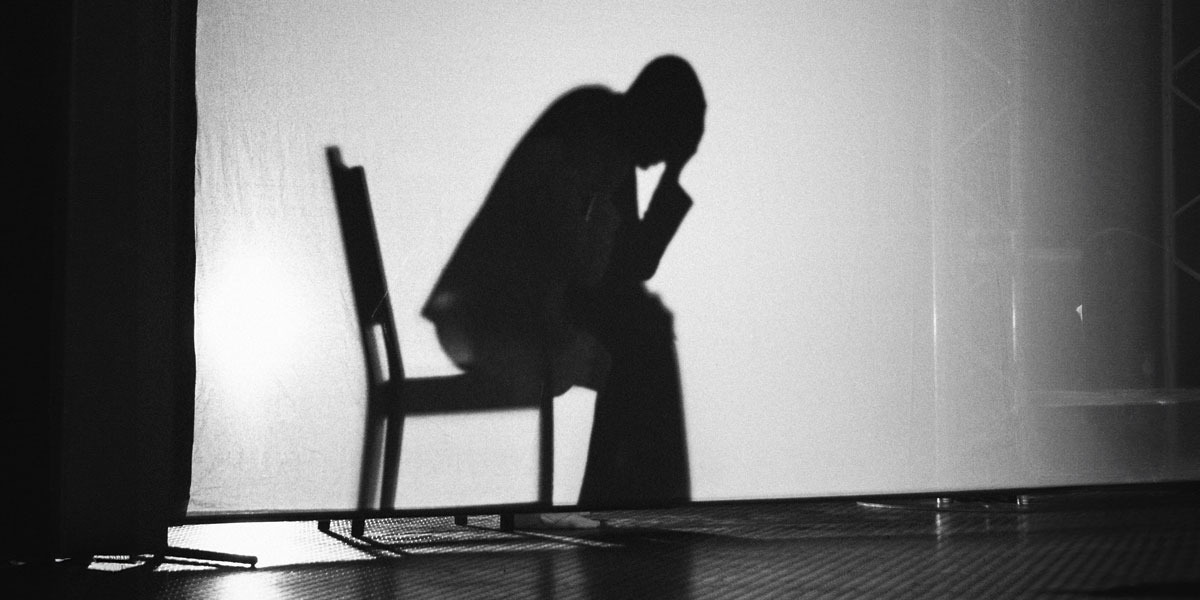
When our possibilities seem to collapse
Opinion + AnalysisPolitics + Human RightsSociety + Culture
BY Simon Longstaff 24 FEB 2025
In recent years, I have had an increasing number of conversations with people who feel overwhelmed by world events.
They describe the world as wracked by multiple crises of a magnitude such that efforts to reform or repair what is broken is simply futile. This attitude is not confined to those who are poor, oppressed or marginalised. This particular feeling seems to be divorced from personal circumstances – with even the privileged experiencing the same grim outlook.
Especially troubling is the fact that this feeling has been building, despite all of the evidence that Earth has become, on average, a safer, more peaceful place. A decreasing percentage of people live in abject poverty. Infant mortality rates are declining. There are fewer famines and more to eat. As a whole, the ‘four horsemen of the Apocalypse’ have been left playing cards in the stable.
Of course, specific individuals and groups still suffer the full panoply of ills that can afflict the human condition. But, overall, things have been getting better at the same time that people have come to believe that the world is a place of deepening doom and gloom.
One can easily think of an explanation for the divergence between reality and perception. First, is the power of individual stories. A compelling narrative of one person’s suffering can easily be taken as representative of the whole. It’s the same general phenomenon that leads us to feel better whenever we encounter a narrative in which the ‘underdog’ triumphs over the more powerful rival. These figures are swiftly ‘universalised’ to the point that any one of us can see our own possibilities reflected in that of the protagonist. So, when our stories tilt from the positive to the negative we are likely to see our view of the world take on a pessimistic hue.
This brings us to the second reason for this negative outlook. Unfortunately, the media (in all its forms) has ‘discovered’ that ‘bad news’ sells. Or to be more precise, bad news attracts and retains an audience in a way that positive news does not. The implications of this ‘insight’ have been grossly magnified by the emergence of social media – with its insatiable drive for eyes, ears, minds, etc. One of the most depressing stories I have heard, in recent years, is of a publisher that monitors every second of a story’s online life. The moment interest begins to flag, I am reliably advised, the instruction is to ‘bait the hook’ with something that implies ‘crisis’. So, what might properly be considered ‘troubling’ is elevated to the point where it feels like an existential threat posing a risk to all. Few remember the details when (almost inevitably) the more mundane truth emerges. What remains is the feeling – and facts rarely disturb established feelings.
These factors (and a host of others – too numerous to mention here) have combined to help generate a creeping sense that one might as well disengage and let the world go to hell in the proverbial ‘handbasket’. Let’s not bring children into a failing world. Let’s limit our attention to things within our span of control (not much). Let’s not vote – it’s pointless …
The deeply disturbing thing about all of this is that the temptation to withdraw because of the perceived futility of engagement gives rise to a self-fulfilling prophecy grounded in that great enemy of democracy; despair.
The truth of democracy (and markets for that matter) is that even the least powerful individual can change the world when working with others. Remarkably, we don’t even have to plan and coordinate for collective action to have a powerful effect. Indeed, one need not be ‘heroic’ (in the ‘Nelson Mandela’ sense) to be an author of momentous events. It’s just that you are unlikely ever to know when your decision or action tilted the world on its axis. Often it just requires a person to fall just a smidgen on the right side of a question. And when enough people do the same, there is progress.
Despair is the absence of hope that this is possible. It is a deceit that makes us fail – not because we never could succeed but because it destroys our belief in the possibility that we can be effective agents for change.
If we succumb to despair, then our possibilities collapse – not because we are powerless but because we believe ourselves to be.
Australia should aspire to be one of the world’s great democracies. It’s in our bones – dating back to South Australia that, in the late nineteenth century, brought into the world the first modern democracy in which all adults could not only vote but take up public office – irrespective of sex, gender, race or creed. For years, the secret ballot was known as the “Australian Ballot’. In 1900, Australia held more patents per head of population than any other country in the world. Yes, there were all the problems of colonisation, racism, sexism and a plethora of wrongs. And yes, we went backward for a while after Federation. But that reality did not give rise to despair.
Things actually can get better. Democracy is the vehicle for doing so; not because it demands so much of us as individuals – but because it demands so little. We just need to allow ourselves a small measure of hope to defeat despair. We need to take just a small, individual step forwards. Do this together, and nothing can stop us.

Ethics in your inbox.
Get the latest inspiration, intelligence, events & more.
By signing up you agree to our privacy policy
You might be interested in…
Opinion + Analysis
Politics + Human Rights
Trump and tyrannicide: Can political violence ever be justified?
Opinion + Analysis
Society + Culture, Politics + Human Rights
Who gets heard? Media literacy and the politics of platforming
Opinion + Analysis
Relationships, Society + Culture
Meet Josh, our new Fellow asking the practical philosophical questions
Opinion + Analysis
Politics + Human Rights, Relationships
Want #MeToo to serve justice? Use it responsibly.
BY Simon Longstaff
Simon Longstaff began his working life on Groote Eylandt in the Northern Territory of Australia. He is proud of his kinship ties to the Anindilyakwa people. After a period studying law in Sydney and teaching in Tasmania, he pursued postgraduate studies as a Member of Magdalene College, Cambridge. In 1991, Simon commenced his work as the first Executive Director of The Ethics Centre. In 2013, he was made an officer of the Order of Australia (AO) for “distinguished service to the community through the promotion of ethical standards in governance and business, to improving corporate responsibility, and to philosophy.” Simon is an Adjunct Professor of the Australian Graduate School of Management at UNSW, a Fellow of CPA Australia, the Royal Society of NSW and the Australian Risk Policy Institute.
Does your body tell the truth? Apple Cider Vinegar and the warning cry of wellness

Does your body tell the truth? Apple Cider Vinegar and the warning cry of wellness
Opinion + AnalysisHealth + WellbeingSociety + Culture
BY Joseph Earp 19 FEB 2025
Of all the snake oil salespeople who have dominated the wellness space, few have been as destructively, unsettlingly committed to the bit as Belle Gibson.
For a while, Gibson made her name on her own alleged suffering. A social media influencer, author, and wellness personality, she claimed to have been diagnosed with a horrifying assortment of cancers, from tumours in her brain, to tumours on her liver.
More than that, she claimed that these cancers were responding not to mainstream medicine, but to a wholefood diet. Gibson, a young parent based in Melbourne, was essentially arguing that she had found one of the cures for cancer.
Of course, she hadn’t. When it became clear that Gibson was not passing on some of the money that she had made from her successful cookbook and app to charity, as she promised, her tangle of lies began to fall apart. In fact, Gibson had never been diagnosed with cancer, as she admitted in a trainwreck interview with 60 Minutes, half an hour of television so actively unsettling that it is still seared into the mind of many of the Australians who watched it.
But even then, even when challenged, she never quite admitted the truth. In one memorable moment of the 60 Minutes episode, restaged in the recent Netflix miniseries Apple Cider Vinegar, Gibson is asked to define what “truth” is.
Her mumbly non-answer was taken as evidence that Gibson couldn’t stop lying, even when asked to respond to even the most basic of questions. But her inability to give a clean definition of truth cuts right to the heart of the wellness space – and, hopefully, teaches us how to stay clear of its worst impulses.

The whole truth
Traditional medicine and alternative therapies are constantly lobbied by the likes of Gibson and other wellness influencers, who are suspicious of the “objectivity” offered by mainstream medicine. Gibson, and other traditional medicine advocates like disgraced chef Pete Evans, point to science’s flaws – to the way that medicine messes up. This, they say, is proof that mainstream medicine can’t answer all our problems.
But these critiques of science are not just the domain of wellness influencers – they are also common in post-modern and pragmatist philosophy.
In his book Against Method, Austrian philosopher Paul Feyerabend threw chaos into the established notion of the scientific truth. According to Feyerabend, there is no such thing as the “scientific method” – no way to make the multitude of different ways to enact science appear streamlined and “correct.”
By contrast, Feyerabend advocated for an “anything goes” principle of scientific enquiry, arguing that scientists should follow whatever research paths seem particularly interesting to them.
According to him, science is not some way to get to the heart of the matter – to understand what is definitely, objectively true. Instead, he sees medicine as a way of understanding the world, an art form in the same way that painting a picture, or writing a poem, is a way of understanding the world.
In this way, Feyerabend echoes the work of pragmatist philosopher Richard Rorty. Rorty argued that there is no viewpoint that exists outside of context – no way to get “more objective”. We can’t ever see past who we are and where we are in time. We are constantly mired in context. A “viewpoint outside history” does not exist. Science isn’t a mirror that can be better polished, and eventually represent the world exactly as it is. The most we can hope for is some sort of established consensus, a bunch of subjective viewpoints that align with each other, rather than an objective reality.
Rorty and Feyerabend’s arguments do have some genuine pull to them. It is correct that science is always changing – that discoveries that seemed “objectively true” ten years ago get replaced and reordered. It is also correct that medicine mucks up, and that many are disenfranchised from mainstream forms of science because of the way it uses claims of objectivity like a cudgel, silencing all dissenters. As in, “this is true, and anything that goes against this is false.”
But if we agree with the likes of Feyerabend and Rorty, and do away with the mainstream “truth” provided by science, are we stuck with the likes of Belle Gibson? Does throwing away objectivity mean that we must put up with the liars, scammers, and fraudsters? Does it mean that Gibson really does have the same claim to the “truth” – a truth she could not even name?
The healing nature of balance
The short answer is, of course, no. If questioning the scientific method really did mean that Gibson, who definitely, plainly, simply lied – and made a great deal of cash off those lies, and the perpetuated suffering of those who believed her – then that questioning would be patently dangerous.
But, as with so many things, the answer lies in the acceptance of balance. We do not have to treat medicine as a new form of religion, with iron-clad rules that we dare not ever question. Nor do we have to completely, constantly reject all of its findings, and put up absolute falsehoods in their place.
Rorty was never advocating for the likes of Gibson. Even though he undid some of the foundations of objectivity, he was not arguing that we can do whatever we like, or believe whatever we like. One of his most important and practical ideas, as mentioned above, was the idea of consensus. Even if we take the postmodern approach that “objectivity” is a shaky concept, we can create a picture of what consensus is that gives us all the things we like about objectivity.
As in, consensus can be reached by scientists and doctors. These specialists have dedicated their lives to uncovering the best ways to heal and help our bodies. When enough of these specialists find a common way to heal and help, then we have reached consensus. Consensus has the force of objectivity – it has reasons to explain itself. It’s not just random. It’s not Gibson just making things up. It’s a way of saying, “this works, and a lot of people agree that it works.”
What separates this picture of consensus from “objectivity” and its potential harms, moreover, is that consensus can change. When new discoveries are made, they can be shared around specialists, who can alter what they believe. It’s not that they were “wrong” before. It’s that consensus is malleable, changeable, and ever in-flux.
Belle Gibson couldn’t define what the truth is. She used that messiness to exploit people, and to cause harm. But we can ever-so-slightly release our hold on objectivity, without becoming Gibson. And in doing so, we can embrace a modern medicine that does what it was meant to do: help people.

Ethics in your inbox.
Get the latest inspiration, intelligence, events & more.
By signing up you agree to our privacy policy
You might be interested in…
Opinion + Analysis
Climate + Environment, Health + Wellbeing
How can we travel more ethically?
Opinion + Analysis
Relationships, Society + Culture
Meet David Blunt, our new Fellow exploring the role ethics can play in politics
Opinion + Analysis
Health + Wellbeing, Relationships
Why your new year’s resolution needs military ethics
Opinion + Analysis
Relationships, Society + Culture
